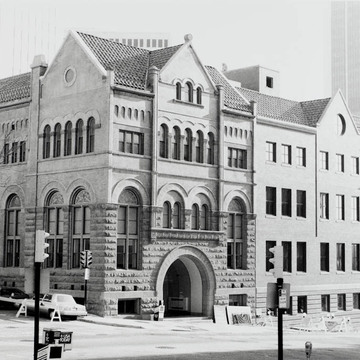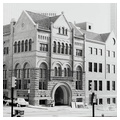Built initially for State Planters Bank (a forerunner of Crestar Bank), this is the oldest surviving major banking structure in the city. The three-story brick and stone building, with gabled attic level and English basement, is a theatrical but symmetrical play of masonry arches in a range of sizes, all very much in the so-called Richardsonian Romanesque idiom. The sensitively detailed 1984 addition, one of Richmond's best examples of infill construction, continues the building's mass and scale to the east corner. The addition also complements the nineteenth-century buildings across the street. Read, the architect of the original building, also designed Watts Hall, a focal point of Union Theological Seminary in Ginter Park.
You are here
Virginia Retirement System Building
If SAH Archipedia has been useful to you, please consider supporting it.
SAH Archipedia tells the story of the United States through its buildings, landscapes, and cities. This freely available resource empowers the public with authoritative knowledge that deepens their understanding and appreciation of the built environment. But the Society of Architectural Historians, which created SAH Archipedia with University of Virginia Press, needs your support to maintain the high-caliber research, writing, photography, cartography, editing, design, and programming that make SAH Archipedia a trusted online resource available to all who value the history of place, heritage tourism, and learning.

















